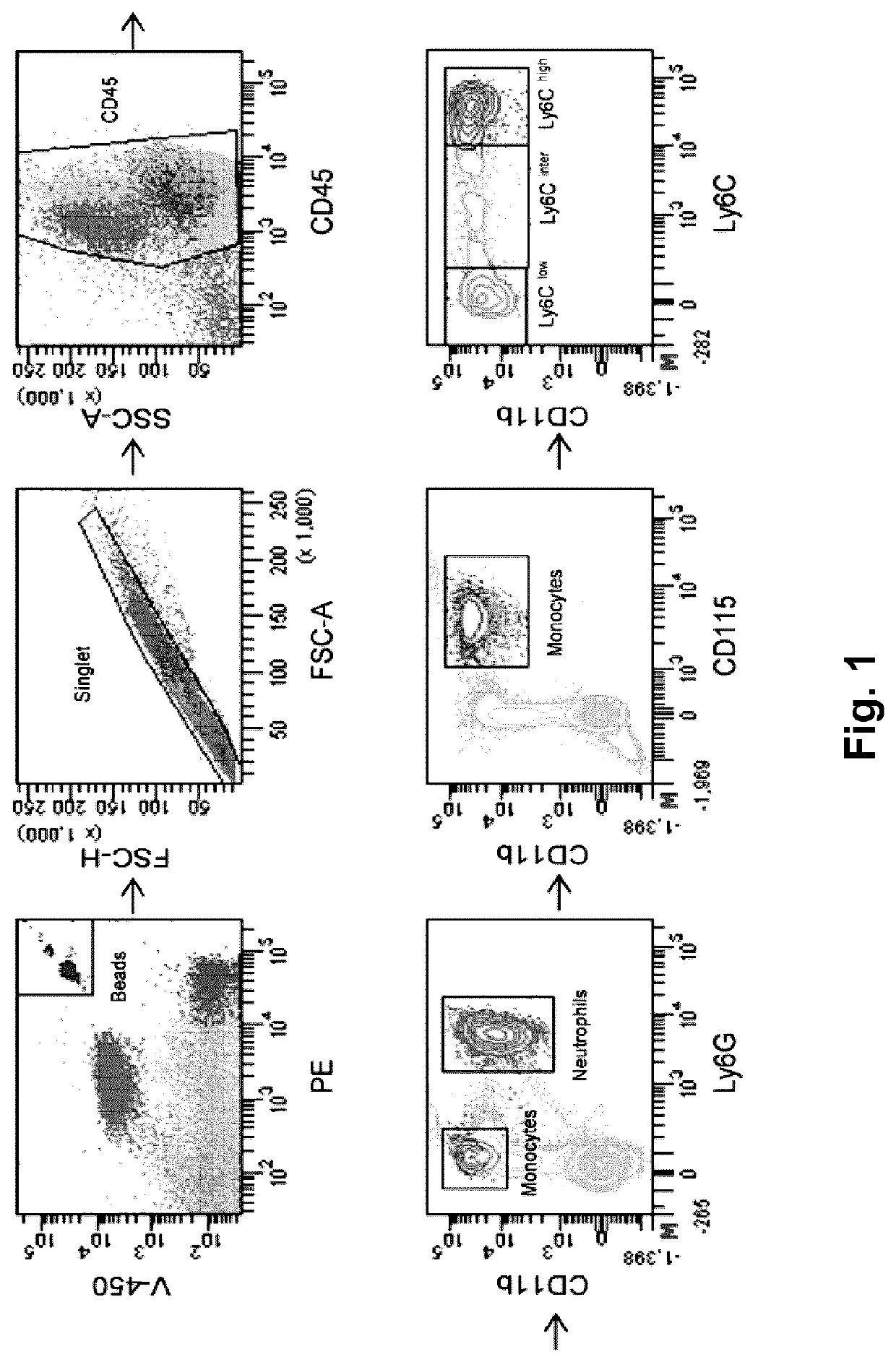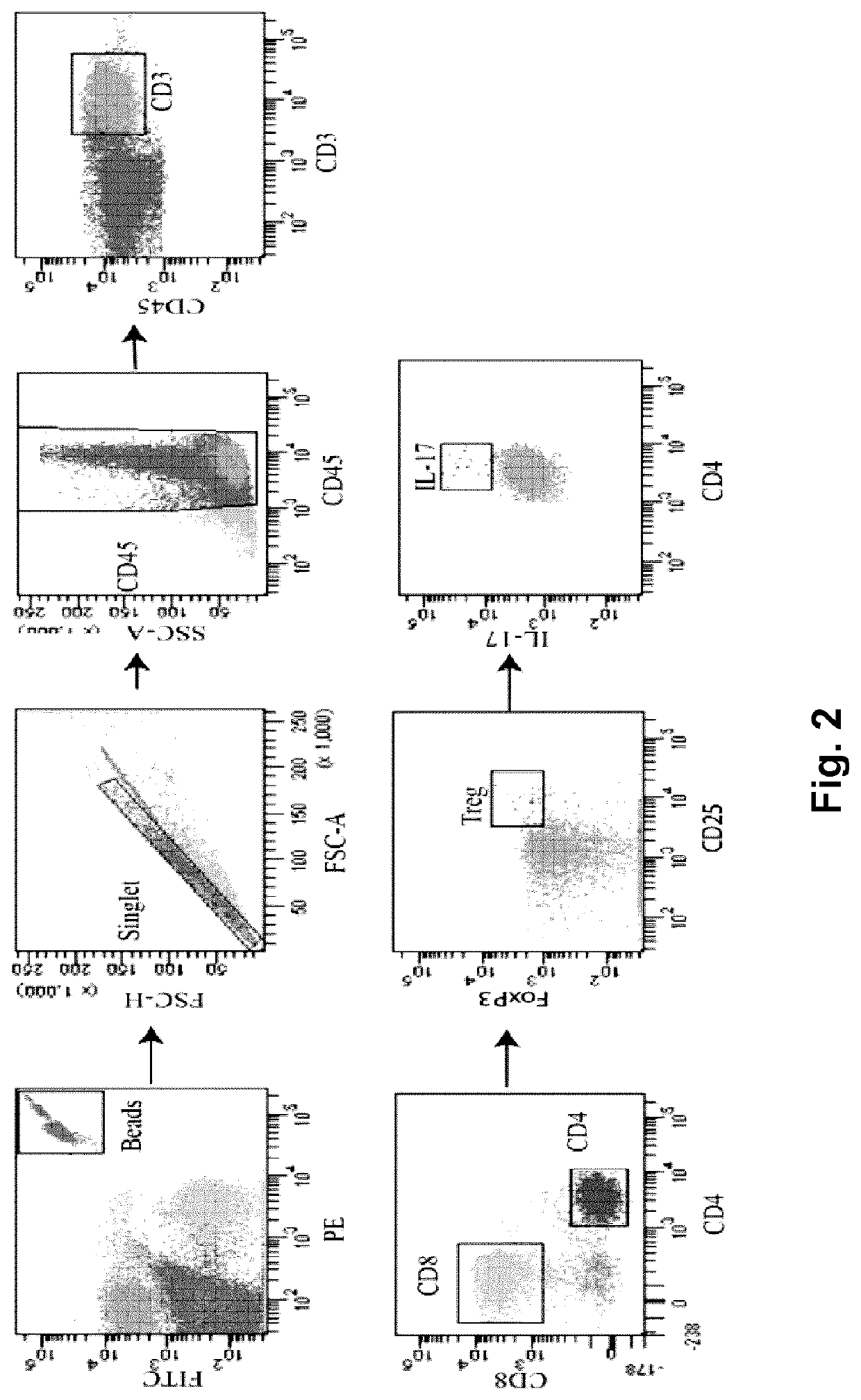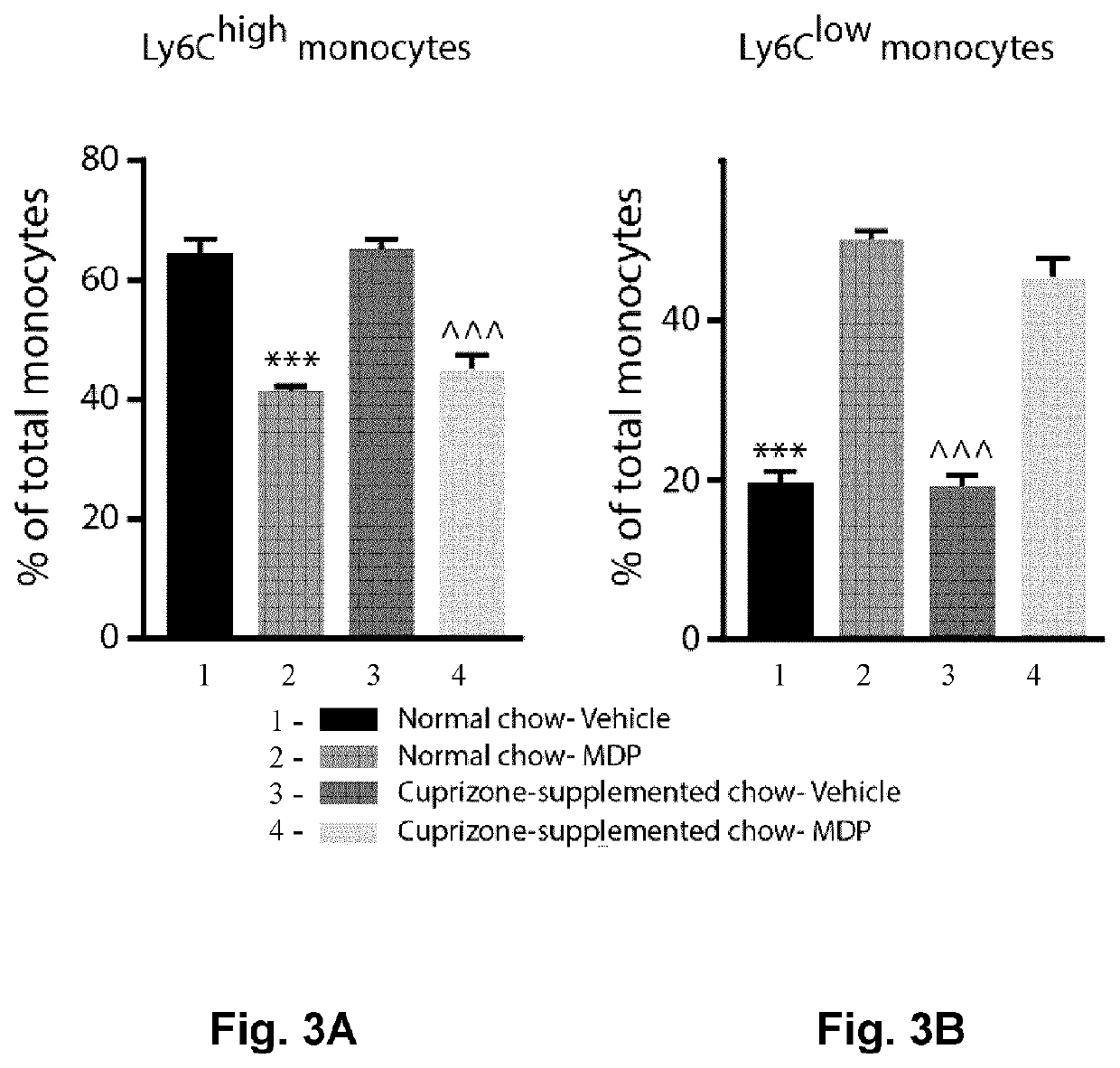Use of nod2 agonist for the treatment, prophylaxis and/or delay of the onset of multiple sclerosis and alzheimer?s disease
a technology applied in the field of multiple sclerosis and alzheimer's disease, can solve the problems of not providing the expected outcomes of clinical trials, unable to stop the progression of the disease, and the mechanism underlying the beneficial effect of the drug remains unclear, so as to reduce the concentration of a, reduce the quantity of a in the brain, and reduce the effect of a
- Summary
- Abstract
- Description
- Claims
- Application Information
AI Technical Summary
Benefits of technology
Problems solved by technology
Method used
Image
Examples
example i
MDP Administration in MS Models—Cuprizone-Induced Demyelinating Model
[0099]Systemic MDP Administrations Shifting Circulating Monocyte Population Towards Ly6Clow Monocyte Subsets in Mice Fed with Cuprizone-Supplemented Diet
[0100]Microglia and monocyte-derived macrophages coordinate remyelination process via phagocytosis and inflammatory responses (Döring A. et al., J. Neurosci. 35: 1136-1148, 2015; Lampron A. et al., J. Exp. Med. 212: 481-495 2015). In this regard, previous study from our group showed phagocytic feature of Ly6Clow monocytes in CNS (Michaud J.-P. et al., Cell Rep. 5: 646-653, 2013). Immunomodulatory effects of MDP was first examined in the cuprizone (CPZ) model. Wild type mice were fed with normal chow or CPZ-supplemented chow during 5 weeks, and the peak of demyelination is observed between 4 and 5 weeks of diet. During the five weeks of CPZ intoxication, mice received MDP (10 mg / kg) or saline injections twice a week. Mice were followed-up throughout the experimental...
example ii
MDP Administration in MS Model; EAE Model
MDP-Treated Mice are Highly Resistant to the Onset of EAE Via Shifting Monocyte Subsets Towards Ly6Clow Monocytes and Regulating the Population of T Cell Subsets
[0104]To address the potential therapeutic effect of MDP in the EAE model, the inventors assessed the EAE onset, disease progression and severity in mice treated with MDP (EAE-MDP) or vehicle (EAE-vehicle). Mice were immunized by subcutaneous injection of a MOG peptide emulsified in complete Freund's adjuvant and accompanied by pertussis toxin, as previously described herein. Animals were injected with MDP or saline two-days post-immunization. EAE-vehicle mice developed disease as characterized by ascending paralysis (Rangachari M. and V. K. Kuchroo, J. Autoimmun. 45: 31-39, 2013). Interestingly, EAE mice treated with MDP were protected from progression of diseases as measured by clinical scores and showed a delay in the day of onset (P≤0.0001) (FIG. 5A). The incidence of disease afte...
example iii
MDP Administrations Modulate Monocyte Subsets and Infiltrating of Ly6Chigh, Ly6Clow Monocytes, T Cell Subsets, Ly6G+ Cells and CD19+ Cells in the CNS Before Onset of EAE
[0107]Next, it was then investigated to determine if the immunomodulatory effects of MDP on monocyte subsets, clinical scores and onset of EAE are correlated with regulation of infiltrating cells into the CNS. Mice were immunized and injected with MDP every 2 days as previously described herein. At 12-days post immunization, all EAE-Vehicle mice had developed EAE, whereas the EAE-MDP group showed no clinical symptom (P≤0.0001) (FIG. 6A and Table 3).
TABLE 3EAE progression in WT mice treated with vehicle or MDPDiseaseCompleteDiseaseonsethind-limbMaximumTotalGroupsincidence(days)paralysisscoredaysEAE / WT-6 / 13 (46.1%)1038%3.512VehicleEAE / WT-0 / 13 (0%) —0012MDP
[0108]At this time point, FACS analysis of the CNS confirmed the drastic reduction in the number of Ly6Chigh together with the increase in Ly6Clow monocytes (FIGS. 6...
PUM
| Property | Measurement | Unit |
|---|---|---|
| pH | aaaaa | aaaaa |
| depth | aaaaa | aaaaa |
| depth | aaaaa | aaaaa |
Abstract
Description
Claims
Application Information
 Login to View More
Login to View More - R&D
- Intellectual Property
- Life Sciences
- Materials
- Tech Scout
- Unparalleled Data Quality
- Higher Quality Content
- 60% Fewer Hallucinations
Browse by: Latest US Patents, China's latest patents, Technical Efficacy Thesaurus, Application Domain, Technology Topic, Popular Technical Reports.
© 2025 PatSnap. All rights reserved.Legal|Privacy policy|Modern Slavery Act Transparency Statement|Sitemap|About US| Contact US: help@patsnap.com



